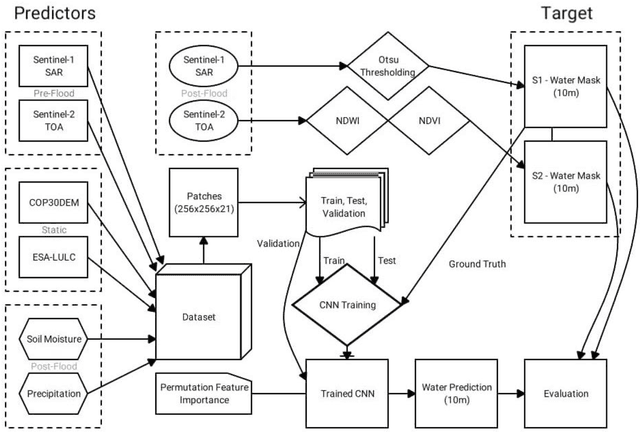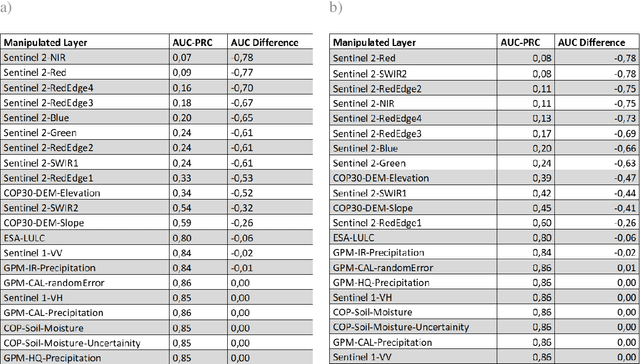Towards Daily High-resolution Inundation Observations using Deep Learning and EO
Paper and Code
Aug 10, 2022



Satellite remote sensing presents a cost-effective solution for synoptic flood monitoring, and satellite-derived flood maps provide a computationally efficient alternative to numerical flood inundation models traditionally used. While satellites do offer timely inundation information when they happen to cover an ongoing flood event, they are limited by their spatiotemporal resolution in terms of their ability to dynamically monitor flood evolution at various scales. Constantly improving access to new satellite data sources as well as big data processing capabilities has unlocked an unprecedented number of possibilities in terms of data-driven solutions to this problem. Specifically, the fusion of data from satellites, such as the Copernicus Sentinels, which have high spatial and low temporal resolution, with data from NASA SMAP and GPM missions, which have low spatial but high temporal resolutions could yield high-resolution flood inundation at a daily scale. Here a Convolutional-Neural-Network is trained using flood inundation maps derived from Sentinel-1 Synthetic Aperture Radar and various hydrological, topographical, and land-use based predictors for the first time, to predict high-resolution probabilistic maps of flood inundation. The performance of UNet and SegNet model architectures for this task is evaluated, using flood masks derived from Sentinel-1 and Sentinel-2, separately with 95 percent-confidence intervals. The Area under the Curve (AUC) of the Precision Recall Curve (PR-AUC) is used as the main evaluation metric, due to the inherently imbalanced nature of classes in a binary flood mapping problem, with the best model delivering a PR-AUC of 0.85.
 Add to Chrome
Add to Chrome Add to Firefox
Add to Firefox Add to Edge
Add to Edge